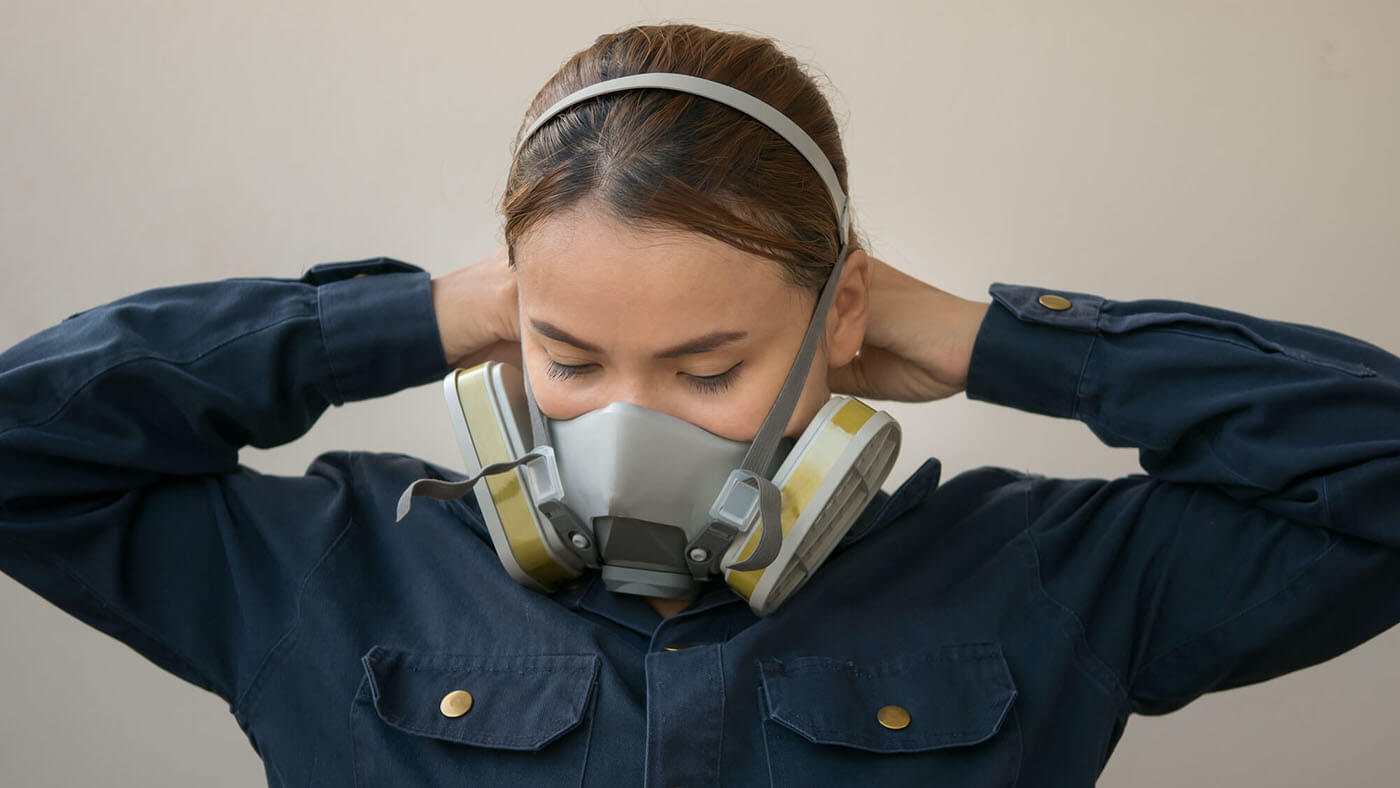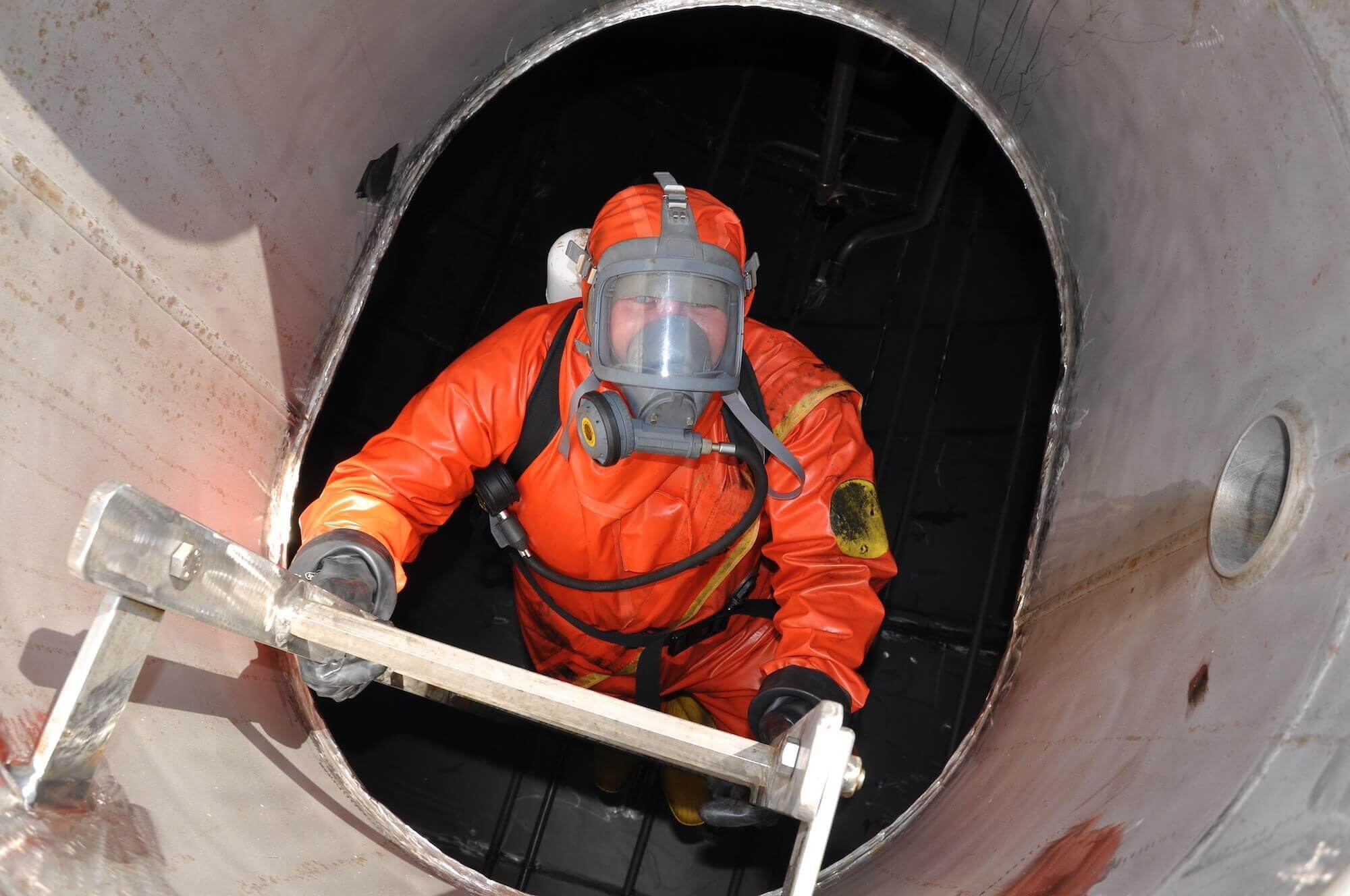ENSURE PROPER RESPIRATOR FIT
For any employee required to use a tight-fitted respirator while on the job, a respirator fit-test will help identify if a respirator fits to their face to properly seal and protect their health. Respirators that aren’t fitted properly simply won’t protect the employee, which could lead to them inhaling harmful chemicals, vapors, particles, etc. This is an essential step in implementing safety measures in the workplace and ensures that your employees will remain safe and healthy while working in a safety-sensitive position.
WHAT IS A RESPIRATOR FIT-TEST?
Differing from a respirator physical, a respirator fit test will test the seal between the respirator’s faceplate and the employee’s face to determine an accurate make, model, and size that will protect the employee. Typically, this test will only last about 10-15 minutes and is performed annually. Employees who wear prescription glasses, safety goggles, earmuffs, etc. might be asked to use those during the respirator fit test to help ensure accuracy and prevent the items from interfering with the fit.
Once a fit test is performed and passed, the employee must ONLY wear the exact same make, model, style, and size that was used to perform the test. Not all respirators fit employees equally, which is why a fit test is so necessary, and if it results in a fail then another make, model, style, or size will be tested until a proper fit is found. Physical changes could also affect the fit of your respirator and include:
- Facial hair (beards, mustaches, etc.)
- Significant weight gain or loss
- Major dental work (dentures)
- Facial surgery
- Significant scarring in the area of the seal
If any of these physical changes occur, or if the employee feels their respirator is no longer suitable, they need to be retested. User seal checks must also be performed each time the employee puts on the respirator for work. A seal check differs from a fit test in that it checks if the respirator is properly sealed to the wearer's face or if it needs to be readjusted.
Respirator fit-tests come in two different types; qualitative and quantitative.
Qualitative Fit Testing
Qualitative fit testing uses your sense of taste or smell, or reaction to an irritant to determine if the respirator is allowing leakage into the faceplate. This is measured as pass/fail and simply determines if you detect a leakage, rather than measuring the actual amount of leakage itself. Qualitative fit tests are usually used for half-face respirators, N95s as well as elastomeric respirators, which only cover your face and mouth.
OSHA outlines four qualitative fit test methods:
- Isoamyl acetate, which smells like bananas;
- Saccharin, which leaves a sweet taste in your mouth;
- Bitrex, which leaves a bitter taste in your mouth; and
- Irritant smoke, which can cause coughing.
Quantitative Fit Testing
Quantitative fit testing will use a device to actually measure the amount of leakage into the respirator, not relying on your sense of taste, smell, or irritation. During this fit test, the employee will wear a respirator with a probe attached or use an adapter, that connects to the device(s) by a hose. This type of fit test can be used for any type of tight-fitting respirator.
The three quantitative fit test methods accepted by OSHA are:
- Generated aerosol;
- Ambient aerosol; and
- Controlled Negative Pressure.
DISA OFFERS AND RECOMMENDS RESPIRATORY FIT TESTING TO ENHANCE YOUR WORKPLACE SAFETY.
Call us at 281-673-2530 or contact us online below.

